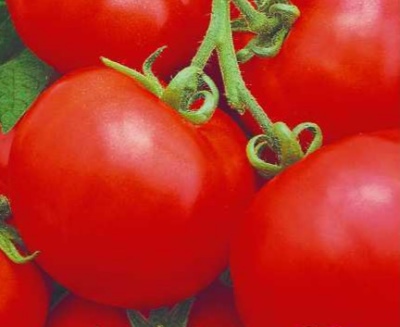
- Authors: Kashnova E. V., Andreeva N. N., Dederko V. N., Stolbova T. M. (Federal State Budgetary Scientific Institution "Federal Scientific Center of Vegetable Growing")
- Year of approval: 2007
- Name synonyms: Spiridonovsky
- Category: grade
- Growth type: determinant
- Appointment: fresh consumption, for pickling and preserving
- Ripening period: early
- Ripening time, days: 95-100
- Growing conditions: for open ground, for film greenhouses
- Marketable fruit yield,%: 94
The Spiridon tomato variety was approved for use back in 2007. Often this variety is also called Spiridonovsky tomato.
Description of the variety
This species has a determinant type of growth. It can be used for fresh consumption, as well as for the preparation of various canned foods.
The bushes are undersized. The height of an adult bush can reach about 50 centimeters. Plants are rather compact in size. The leaves on them are small in size with a dark green color.
The main qualities of the fruit
Unripe tomatoes of this variety are green in color with a spot near the stalk. Vegetables that are already ripe have a bright red color. The weight of one tomato reaches an average of about 41-51 grams.
The shape of ripe vegetables is flat-round, slightly ribbed. Their pulp is rather juicy, fleshy and multi-chamber. The inflorescence is simple, the stalk is articulated. The variety boasts good keeping quality.
Taste characteristics
Spiridon has excellent taste, therefore it is used both for consumption in a simple fresh form and for preparing a variety of dishes.
Ripening and fruiting
This type of tomato is considered early. It matures approximately 95-100 days after planting outdoors. Harvesting period occurs throughout the season as the fruit ripens.
Yield
This variety will allow you to get a large harvest. From one hectare of land it will be possible to harvest about 249-315 centners of tomatoes.
The timing of planting seedlings and planting in the ground
Sowing should be done in late March - early April. Young seedlings are planted in a permanent place at the age of 60-67 days.

Growing tomato seedlings is an extremely important process, because it largely depends on whether the gardener will be able to harvest at all. All aspects must be taken into account, from seedbed preparation to planting in the ground.
Landing scheme
These tomatoes must be planted in the ground according to the 40x40 centimeters scheme.

Growing and care
Seedlings should be sown first. To do this, you need to prepare plastic containers, most often simple disposable cups are used. And you also need to make an earthen mixture, for this they mix the land taken from the garden, peat and organic fertilizing with each other. You can also buy ready-made mix from a garden store.
The prepared soil is carefully laid out in containers. Seeds are laid out there on top. At the same time, the optimum temperature for their germination is 23-25 degrees Celsius.
When the first leaves appear, the seedlings begin to be planted in open ground. It is better to dig planting holes in advance. In this case, it is recommended to add wood ash.
To grow such a crop, it is necessary to choose areas that are sufficiently well illuminated by the sun. They also need to be protected from strong winds. Remember that the best precursors for tomatoes are cucumbers and cabbage, and onions. It is not recommended to plant in places where potatoes, eggplant, peppers were previously grown.
Avoid places where groundwater flows. They can cause disease of the root system of vegetation.
Seedlings are lowered into the dug holes as carefully as possible so as not to damage it. It is better to mulch the topsoil. For this, humus is often used. In order to accelerate the growth of seed germination as much as possible, to improve fruit set, it is better to use special growth stimulants.
Remember that this crop needs periodic watering. They should be carried out when the top layer of the earth dries up. The frequency of watering is increased only during dry periods. The best option would be rainwater, since it is quite soft, nutrients are easily dissolved in it. Moisturizing is best done early in the morning or late in the evening.
Plants need to be watered strictly at the root. If water gets on the leaves, then there will be a high risk of late blight. Immediately after the procedure, you can mulch the soil with hay or straw, and rotted sawdust can also come up.
Top dressing also plays an important role. The first time fertilizers are applied when the fruits begin to actively gain their mass. At this stage, you can use ammonium nitrate and potassium sulfate. They are bred in water. Moreover, one bush should have at least 3 liters of composition.
The second top dressing is applied approximately 20-30 days after the first. You can use the same fertilizers. To maximize the quality and taste of ripe fruits, you can periodically make an infusion with wood ash (two full glasses per 10 liters of water). The composition must be kept for 5-6 hours.




A plant needs different micronutrients at each stage of growth. All fertilizers can be divided into two groups: mineral and organic. Folk remedies are often used: iodine, yeast, bird droppings, eggshells.
It is important to observe the rate and period of feeding. This also applies to folk remedies and organic fertilizers.



























































































